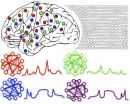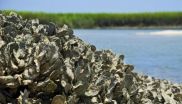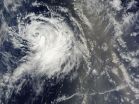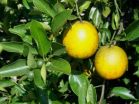Swallowing disc batteries can cause severe injury in children
2010-09-21
(Press-News.org) Severe injury to the esophagus can occur after a child swallows a disc battery, according to a report in the September issue of Archives of Otolaryngology–Head & Neck Surgery, one of the JAMA/Archives journals.
"A disc battery is an increasingly common foreign body ingested by children," the authors write as background information in the article. The American Association of Poison Control Centers reported a total of 2,063 disc battery ingestions in 1998; the number increased 80 percent during the next eight years. When the battery is lodged in the esophagus, its alkaline contents can leak, causing tissue death and burns from electrical discharge.
Stanley J. Kimball, D.O., of Mount Carmel Health System, Columbus, Ohio, and colleagues reviewed the medical charts of 10 pediatric patients who underwent endoscopic retrieval of a swallowed disc battery over a 10-year period between 1998 and 2008. The children were an average age of 3.2 years, four were female and six were male. A chest X-ray was taken for each patient and one also underwent a chest computed tomographic (CT) scan.
"Five patients had an observed ingestion or were found coughing," the authors write. "Two patients complained of a sore throat and self-reported foreign body ingestion. Three patients were diagnosed incidentally via chest radiograph (two exhibited persistent upper respiratory tract symptoms, and one had the foreign body discovered during a workup for chest and back pain after falling off her bike)."
The children stayed in the hospital for an average of 6.9 days, with a range of one to 30 days. Six patients were seen within six hours of ingesting the battery, one after 10 hours and one after 12 hours; two patients had a substantial delay in discovery of the battery, one for seven days and one for 30 days.
Three patients had minimal damage to the esophagus, including one with no injury and two with superficial injuries to the mucus membrane. The other seven patients had more severe damage, with five sustaining damage to the smooth muscle lining the esophagus and two experiencing a perforation of the esophagus (occurring in both patients with delayed diagnoses). One patient's extensive injury resulted in a tracheoesophageal fistula, an opening between the trachea and esophagus.
"In conclusion, severe injury can occur rapidly following disc battery ingestion. A high index of suspicion for a disc battery is necessary to avoid life-threatening sequelae. Emergency endoscopic retrieval is required in these situations," the authors write. "A multidisciplinary approach involving otolaryngology and pediatric surgery can be very helpful, especially when a tracheoesophageal fistula and/or uncontained perforation is identified."
INFORMATION:
(Arch Otolaryngol Head Neck Surg. 2010;136[9]:866-871. Available pre-embargo to the media at www.jamamedia.org.)
Editor's Note: Please see the article for additional information, including other authors, author contributions and affiliations, financial disclosures, funding and support, etc.
ELSE PRESS RELEASES FROM THIS DATE:
2010-09-21
Patients who seek a second surgery to revise their rhinoplasty often do so because they are dissatisfied with the symmetry of their nasal tip and because they experience nasal obstructions, according to a report in the September/October issue of Archives of Facial Plastic Surgery, one of the JAMA/Archives journals. Surgeons who examine revision rhinoplasty candidates cite slightly different findings than patients, suggesting that communication about nasal aesthetics could be improved.
Approximately 5 percent to 15 percent of patients who have rhinoplasty [plastic surgery ...
2010-09-21
Analysis of seagull droppings has revealed that one in ten carry 'superbug' bacteria, resistant to the last-resort antibiotic Vancomycin. Researchers writing in BioMed central's open access journal Proteome Science investigated 57 migratory seagull samples recovered from an island off the coast of Portugal.
Gilberto Igrejas from the University of Trás-os-Montes and Alto Douro, Portugal, worked with a team of researchers to carry out the study. He said, "We used a novel technique called proteomics to detect the maximum number of bacterial proteins which are thought to ...
2010-09-21
Berkeley — When it comes to conducting complex tasks, it turns out that the brain needs rhythm, according to researchers at the University of California, Berkeley.
Specifically, cortical rhythms, or oscillations, can effectively rally groups of neurons in widely dispersed regions of the brain to engage in coordinated activity, much like a conductor will summon up various sections of an orchestra in a symphony.
Even the simple act of catching a ball necessitates an impressive coordination of multiple groups of neurons to perceive the object, judge its speed and trajectory, ...
2010-09-21
SPRINGFIELD, MO—The American elderberry is showing promise as a profitable commercial fruit crop. Traditionally used for making jelly, juice, and wine, elderberry is becoming increasing important in North America's burgeoning "nutraceutical" industry. Historically, elderberries have mostly been harvested from the wild; researchers have made recently made efforts to select or develop improved cultivars. Increased interest and emerging markets are encouraging scientists to develop improved elderberry cultivars that yield consistent, superior production. Scientists from the ...
2010-09-21
GRIFFIN, GA—Blueberry aficionados will soon have a tasty, colorful new variety for their backyard gardens. Blueberry experts D. Scott NeSmith and Mark K. Ehlenfeldt introduced 'Blue Suede™' in a recent issue of HortScience. The new southern highbush blueberry (Vaccinium hybrid) was released by the University of Georgia's College of Agricultural and Environmental Sciences, the University of Georgia Agricultural Experiment Station, and the U.S. Department of Agriculture–Agricultural Research Service. 'Blue Suede™' is targeted for sales to the home gardener market.
According ...
2010-09-21
WEST LAFAYETTE, Ind. - A Purdue University-led research team has uncovered the chemical components of the adhesive produced by oysters, providing information that could be useful for fisheries, boating and medicine.
A better understanding of oysters' ability to stick together to form complex reefs would help those trying to boost the dwindling oyster population, aid in the creation of materials to keep boat hulls clean without harming the environment, and bring researchers one step closer to creating wet-setting adhesives for use in medicine and construction.
Jonathan ...
2010-09-21
EAST LANSING, MI—When consumers visit garden centers in spring they will most likely buy flowering ornamental plants that are ready for their home gardens. Studies have shown that consumers favor plants that are already in flower rather than those that are "vegetative"—a preference that can present multiple challenges for commercial growers.
To satisfy consumers' wishes, producers of ready-to-flower ornamentals like bedding plants and perennials start growing crops far in advance of the spring buying season, often during the dark and short days of winter. When the days ...
2010-09-21
Dust has been blowing into the Eastern Atlantic Ocean from Africa's Saharan Desert, and a NASA satellite captured some of that dust east of Tropical Storm Julia.
NASA's Moderate Resolution Imaging Spectroradiometer (MODIS) instrument on the Terra satellite captured a visible image of Tropical Storm Julia on Sept. 18 at 13:50 UTC (9:50 a.m. EDT) and noticed a large area of Saharan dust over the Atlantic Ocean, to Julia's east.
On Sept. 20 at 5 a.m. EDT, Julia was still holding on to tropical storm status with maximum sustained winds near 45 mph. Julia was located about ...
2010-09-21
Hurricane Karl made landfall near Veracruz, Mexico on Friday, Sept. 17 and moved inland over Mexico's rugged terrain, which took the punch out of the storm. As Karl was moving into Mexico, NASA aircraft and NASA satellites were gathering data from this storm that jumped from a tropical storm to a Category 3 hurricane the day before.
Karl had maximum sustained winds of 115 mph when it made landfall on Friday afternoon, Sept. 17. That made Karl a Category three hurricane on the Saffir-Simpson scale, and a major hurricane to boot.
On that day, NASA's Genesis and Rapid ...
2010-09-21
LAKE ALFRED, FL—Successful mechanical harvesting of perennial fruit crops requires efficient, economical harvesting systems that do not reduce trees' production life or diminish fruit quality. Most of the world's citrus is now harvested manually, but the use of efficient and lower-cost mechanical harvesting techniques is expected to increase in the next few years, especially in the large citrus plantations in Florida and Brazil. The citrus industry is ramping up efforts to extend the harvest season past June, when the following year's crop becomes large enough to be susceptible ...
LAST 30 PRESS RELEASES:
[Press-News.org] Swallowing disc batteries can cause severe injury in children






